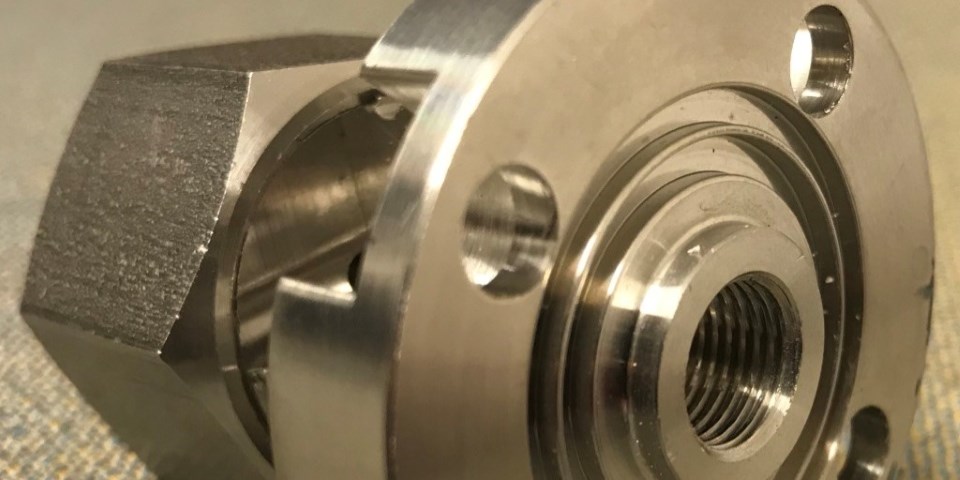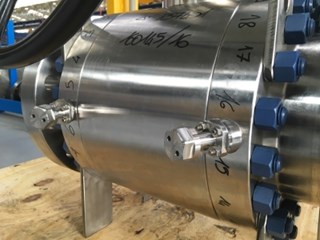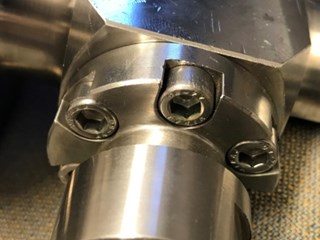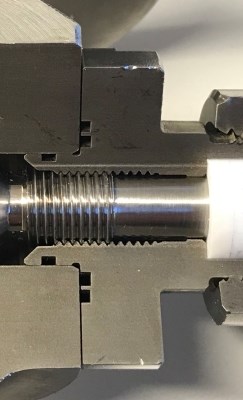^ Figure 1. Class 900 fitting with a double flange seal with O-ring and graphite or PTFE and graphite.
Article by Ingolf Fra Holmslet, Klyde Consultants AS
___
I know that there are a lot of old plants with NPT / BSPT in the pipes and valves and of course one can´t overnight ban them, but when old valves and pipes are replaced there should NOT be tapered threads in the new equipment.
I am not talking about tapered threads in pneumatic or hydraulic systems, though I would like to replace them as well, as tapered threads, in my eyes, are obsolete equipment. Then there is a question: With what should the tapered threads be replaced? In my mind any parallel threads with seal would be better than the tapered tread. Looking at the safety aspect of the tapered threads there have been too many leaks and accidents related to them and that alone is a good reason to get rid of those connections. It is actually up to the end users to get together and do a long overdue job in getting a better alternative to the tapered threads. I am aware of the fact that there are tapered threads on drill pipes, and they are not included in this.
There are several alternatives with parallel threads combined with single, double or triple seals with a combination of lip seal, O-ring and/ or graphite which all are safer than the tapered thread. It all depends on where the connection is to be used.
If we are talking about the ball/gate valve connection for the seat injection fittings that goes directly to the upstream of the valve, one could use a miniature flange as illustrated in figure 1. That fitting is a class 900 with a double flange seal with O-ring and graphite or PTFE and graphite. In figure 2 one can see a new valve with that type of fittings. Illustrated in figure 3 you can see the same type flange as a bonnet on a small needle-valve. Figure 4 showing the 3 flange seals. The lower radial seal being a lip-seal and the two axial seals being lipseal and graphite or metal c ring. On the vent and/or drain connection many end users already specify ANSI flanges on class 600 and above. But foolishly on many of those valves there are blind flanges with∞” NPT blind or bleed plugs installed in the centre of the flange. The reason for the vent or drain port is to install an auxiliary valve enabling the personnel to test and/or perform maintenance on the valve.
To be continued
Before my next article I have a question for you readers: Do any of you have photo showing galled, blown out or broken NPT connections? Personally I have seen many of them, but never taken a photo, and I need some illustrations for my next article in line.
About the expert
Norwegian consultant and valve instructor Mr Ingolf Fra Holmslet writes a series of articles for Valve World. You can contact him via his website,
www.valve.no, or by email,
ingolf@valve.no





